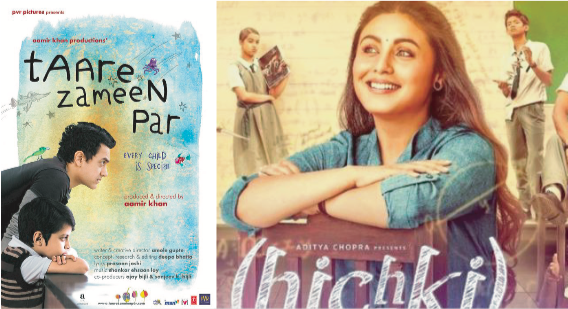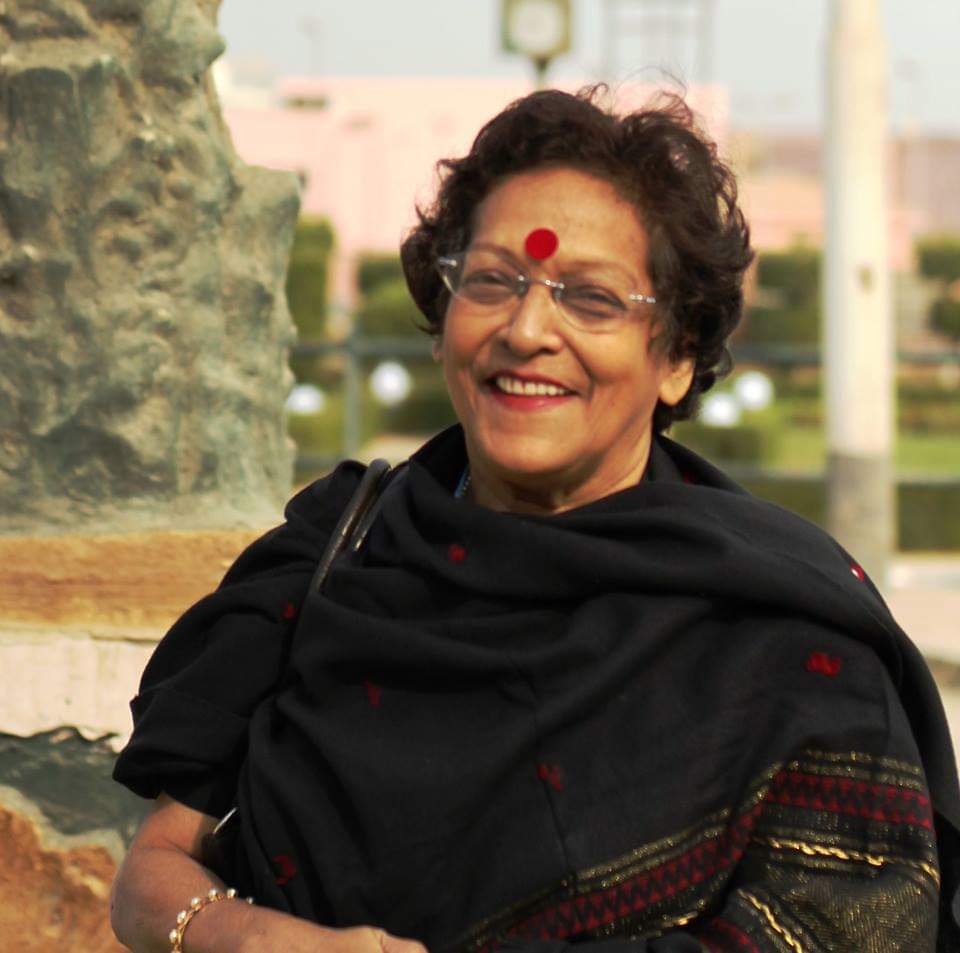The main problem with the depiction of mental illness in Indian films is that it is not backed by the depth of research it demands. This comes across with even very successful films like Taare Zameen Par, where Ishaan is a victim of dyslexia, which is not a mental illness at all, but is a learning disability.
Path-breaking movies, yet…
Taare Zameen Par is a path-breaking film in the way it set off a trend among filmmakers who began to take a deeper look into the minds of people who are differently abled – genetically, physically and mentally. They are people with average and above-average levels of intelligence. But since they do not fall within our accepted notions of ‘normality’, we tend to alienate them from the mainstream. Most of the time, thanks to our ignorance, we cannot even recognise their problems, let alone acknowledge them. The film turned out to be a miracle. It had all the ingredients of a masala film – songs, heart-tugging sentimental scenes, violence, a multi-layered story with twists and turns. But the message came across – good and strong.
By the same argument, the character Amitabh Bachchan plays in Black is of an alcoholic teacher who can teach and counsel children who are physically challenged. But towards the end of the film, he is shown affected by Alzheimer’s that keeps progressing with time. Yet, towards the end, the film shows that perhaps his memory is coming back which is medically impossible as of today. Sanjay Leela Bhansali’s Black evoked the wrath of medical specialists for its misrepresentation of Alzheimer’s which, they insist, is incurable. This incurable, degenerative and terminal disease was first described by German psychiatrist and neuropathologist Alois Alzhemier’s in 1906, and was named after him.

A recent feature film on Alzheimer’s and how it impacts not only the patient but also the entire family, came across very movingly in a film by Geeta Sahai called I Remember. I Remember is about Adhira Goswami and the intense mental pain she suffers when she just begins to realise that perhaps, she is losing her memory. Her family, comprising her husband Gautam who is a financial analyst in a corporate firm, daughter Shivani who is a research scholar, and their maid Renu, suffer as they grapple with the changed situation in their lives, and the changing equations between and among their relationships and interactions. She is diagnosed as an Alzheimer’s patient and this is just the onset of the ailment, the doctor informs. The very successful professional woman who holds a high-powered job in a television channel, “struggles with the gradual loss of identity and lack of control over her own life,” says Sahai.
Other symptoms of Alzheimer’s shown in passing are – Adhira having panic attacks when she cannot even remember what she is looking for, or, pointing out to a photograph of Gaurav to her maid and saying that this man must have taken away a hundred rupee note from her purse, hating to visit relatives or going out anywhere, repeating the same question, till Shivani gets annoyed and walks away, and so on.
“The facts are shocking – approximately 50 million in the world have Alzheimer’s, four million Alzheimer’s patients are from India and most striking – 2 out of 3 people with Alzheimer’s are women. With these statistics, how could I not do anything? It was disturbing. The campaign call by Alzheimer’s Disease International – every three seconds someone in the world develops Dementia/Alzheimer’s made me realise that the time has come now where each second counts. Meeting caregivers made me understand the pivotal role they play in supporting Alzheimer’s patients live a dignified life, which I have tried to show through my film – I Remember” says Sahai.
Hichki is much more than Tourette’s Syndrome, which, simply defined is a genetic disorder characterised by vocal and motor tics. There is no cure for it till date. According to data provided at a 2006 conference by the National Institute of Neurological Disorders and Stroke, Tourette’s Syndrome affects approximately six out of 1000 school children in the US. However, experts opine that it is impossible to find out the exact demographic break-downs of the percentage of TS-affected people in any population, because this neurological disorder has not been thoroughly addressed in any of the published literature or even on the TS Association’s website. But it is not a mental disease. It is a genetically challenging condition where the patient is perfectly normal in every sense other than the chronic hiccups he/she suffers from for which there is no cure. Hichki deals with this very logically without either glamorisation or misinformation.
Stuttering and stammering again, is not a mental illness, but a genetic aberration. Those who stammer and stutter are as normal as you and me. But they are generally socially ostracised in certain ways because of their difficulty in speech issues. Members of the Indian Stammering Association had, in the recent past, decided to file a petition in the Nainital High Court seeking legal action against Golmaal-3 which shows one character who stammers endlessly, and is made fun of by the rest of the gang. The audience joins in the laughter and participates in the collective insult. “This promo portrayed stutterers in very bad light, like they are dim-witted people with less intelligence”, says Nitin Tomar, an active member who moved this idea of filing a petition. Nitin is also planning an online petition to CBFC, and to the Ministry of I&B, Ministry of Health and Family Welfare so that it acts as a deterrent in the derogatory portrayal of people who are differently abled or are born with minor defects.
My Name is Khan zeroes in on the hero, Rizwan Khan, portrayed by Shahrukh, who suffers from Asperger’s syndrome (ASD). Asperger’s syndrome is an autism spectrum disorder. Victims of ASD show significant difficulties in social interaction, along with restricted and repetitive patterns of behaviour and interests. It differs from other autism spectrum disorders by its relative preservation of linguistic and cognitive development. Such people are often physically clumsy and use atypical language. There is no single treatment, and the effectiveness of particular interventions is supported by only limited data. Intervention is aimed at improving symptoms and function. The mainstay of management is behavioural therapy, focusing on specific deficits to address poor communication skills, obsessive or repetitive routines, and physical clumsiness.
Bangalore-based consulting psychiatrist Ajit Bhide was so angered by the misrepresentation of mental illness in the Ajay Devgun film Main Aisa Hi Hoon plagiarised from the Sean Penn film I am Sam, he wrote a scathing piece in the Karnataka edition of The Indian Psychiatric Society. “The director remains totally unclear about the condition of the hero, the exact handicap(s) he has, and does a great disservice by confusing autism with mental retardation,” he writes. James M. Wall, editor of Christian Century magazine writes, “The slightest suggestion that a disability is to be either pitied or laughed at, destroys the integrity of the work. Because our society understands that disability is not funny and is not fatal. Rather, they happen in a person’s life which must be received and handled with courage and growth. Films that make this point artistically serve as an education to each new generation regarding both the challenge and the opportunity of disabilities.”
There are many more films that have been centered on mental issues such as Barfi, Ghajini, Maine Gandhi Ko Nahin Mara, Krazzy Four and many others. According to some studies, cinema dramatises and distorts images of mental illness, emphasising on its danger, criminality and unpredictability, with such images leading to negative reactions such as fear, rejection, derision and ridicule. Added to incorrect representations of the clinical picture is the often incorrect depiction of its management, treatment and rehabilitation. There is little distinction made by filmmakers, insist medical and psychiatric experts, between intellectual disability and psychotic disorder, and the character ends up with a bizarre depiction. The saddest part of this whole story is that when we watch films that are designed as powerful psychiatric melodramas, we respond with neither laughter nor fear, but pity for the bewildered victim. Is that what he would want?


 [/column]
[/column]